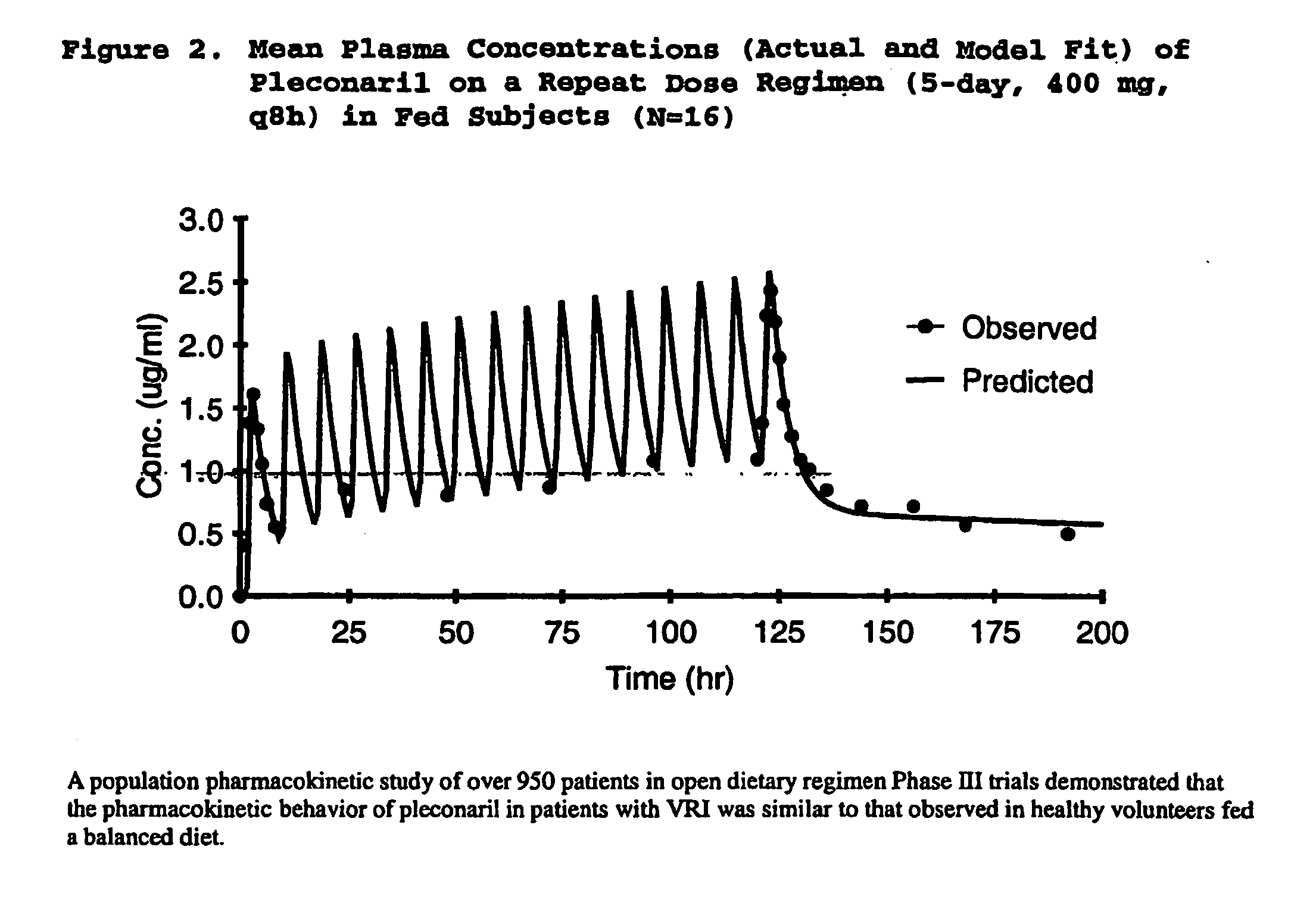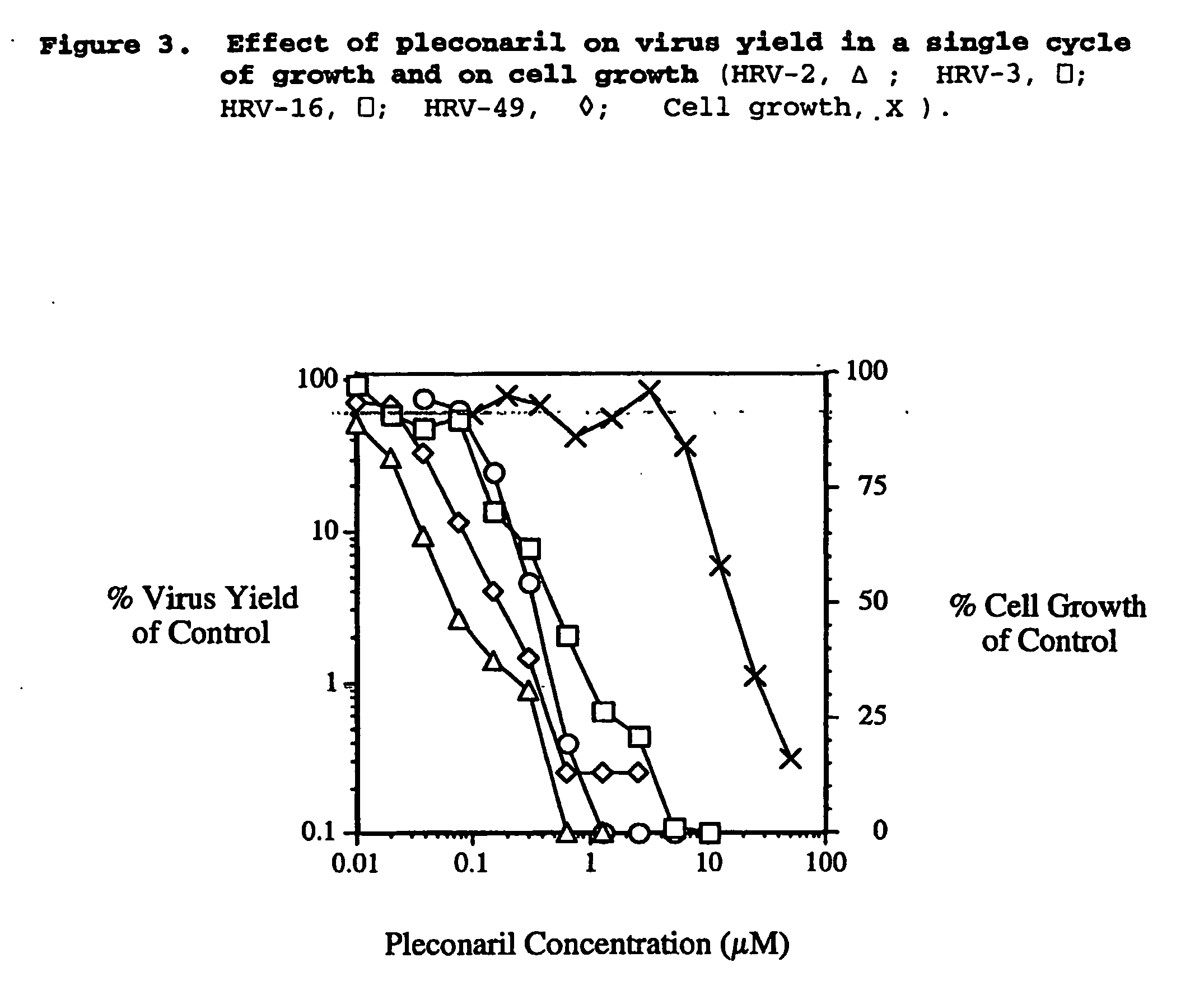Methods of reducing rhinovirus contagion and related compositions
a composition and contagion technology, applied in the field of methods of reducing rhinovirus contagion and related compositions, can solve the problems of unnecessarily increasing the cost associated with vris, significant increase in medical resources, and impracticality of vaccine development, so as to reduce the amount of pleconaril, inhibit the contagion of vri, and reduce the risk of vri transmission
- Summary
- Abstract
- Description
- Claims
- Application Information
AI Technical Summary
Benefits of technology
Problems solved by technology
Method used
Image
Examples
example 1
5.4 Example 1
[0168] The following pharmaceutical formulation may be used—as a prodrug pharmaceutical compositions. A tablet formulation for oral administration containing 200 mg of pleconaril, and the following inactive ingredients: lactose, starch, crospovidone, sodium lauryl sulfate, colloidal silicon dioxide, and magnesium stearate.
example 2
5.5 Example 2
[0169] The pharmaceutical formulation of Example 1 may be administered as follows so as to both reduce the infectivity of HRV virions shed and treat infected patient from VRI.
[0170] The present invention is not to be limited in scope by the specific embodiments disclosed in the examples which are intended as illustrations of a few aspects of the invention and any embodiments which are functionally equivalent are within the scope of this invention. Indeed, various modifications of the invention in addition to those shown and described herein will become apparent to those skilled in the art and are intended to fall within the appended claims.
[0171] A number of references have been cited, the entire disclosure of which are incorporated by reference.
PUM
| Property | Measurement | Unit |
|---|---|---|
| time period | aaaaa | aaaaa |
| solubility | aaaaa | aaaaa |
| concentration | aaaaa | aaaaa |
Abstract
Description
Claims
Application Information
 Login to View More
Login to View More - R&D
- Intellectual Property
- Life Sciences
- Materials
- Tech Scout
- Unparalleled Data Quality
- Higher Quality Content
- 60% Fewer Hallucinations
Browse by: Latest US Patents, China's latest patents, Technical Efficacy Thesaurus, Application Domain, Technology Topic, Popular Technical Reports.
© 2025 PatSnap. All rights reserved.Legal|Privacy policy|Modern Slavery Act Transparency Statement|Sitemap|About US| Contact US: help@patsnap.com



